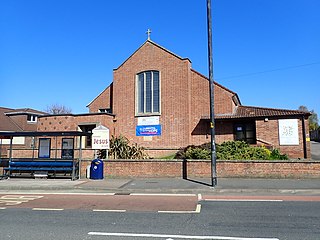Related Research Articles

Bristol Cars was a manufacturer of hand-built luxury cars headquartered in Bristol, England. After being placed in receivership and being taken over in 2011, it entered liquidation in February 2020.

Brian George Jones is an English balloonist.

Gloucestershire County Cricket Club is one of eighteen first-class county clubs within the domestic cricket structure of England and Wales. It represents the historic county of Gloucestershire. Founded in 1870, Gloucestershire have always been first-class and have played in every top-level domestic cricket competition in England. The club played its first senior match in 1870 and W. G. Grace was their captain. The club plays home games at the Bristol County Ground in the Bishopston area of north Bristol. A number of games are also played at the Cheltenham Cricket Festival at the College Ground, Cheltenham and matches have also been played at the Gloucester cricket festival at The King's School, Gloucester.
British Rail Class D3/10 was a locomotive commissioned by the Great Western Railway in England, and later taken over by British Railways. It was a diesel powered locomotive in the pre-TOPS period.

WXBQ-FM is a Country formatted broadcast radio station licensed to Bristol, Virginia, serving the Tri-Cities. WXBQ-FM is owned and operated by Bristol Broadcasting Company, Inc.

Arthur Frederick Richards, 1st Baron Milverton, was a British colonial administrator who over his career served as Governor of North Borneo, Gambia, Fiji, Jamaica, and Nigeria.

Long Ashton railway station was a railway station on the Bristol to Exeter line, 3.5 miles (5.6 km) southwest of Bristol Temple Meads, serving the village of Long Ashton in North Somerset, England. There were two stations on the site, the first, called "Ashton", opened in either 1841 or 1852 and closed in 1856. The second station, originally known as "Long Ashton Platform" before being renamed as "Long Ashton" in 1929, was operational from 1926 to 1941. The site is now partly under the A370 Long Ashton Bypass, and there are no visible remains of the station. There is local support for the station to be reopened, possibly sited further to the west, and possibly as part of the University of Bristol's proposed Fenswood Farm development.

Counterslip Baptist Church is a church located in south Bristol, England. It has been located on its current site on the Wells Road since the 1950s having previously been located on Counterslip near Bristol Bridge.

Stonehouse railway station was a station in Stonehouse, England, on the Bristol and Gloucester Railway between Haresfield and Frocester.
No. 62 Squadron of the Royal Air Force was originally established as a Royal Flying Corps squadron in 1916 and operated the Bristol F2B fighter in France during the last year of the First World War. After the war the squadron was disbanded and it was re-established in 1937 as part of the buildup of the RAF in the late 1930s. During the Second World War the Squadron was deployed to the Far East, operating the Bristol Blenheim from Singapore and Malaya. In 1942 No. 62 Squadron was re-equipped with the Lockheed Hudson and it moved to Sumatra, then Burma and then India. After the close of World War II the squadron disbanded for the second time. It was briefly re-established from 1946 to 1947 as a Dakota squadron and operated out of Burma and India. It final incarnation was as a Bristol Bloodhound missile unit in the early 1960s.
Eastern Coach Works was a bus and train bodybuilder based in Lowestoft, England.
The Stonehouse and Nailsworth Railway was a short railway line in the county of Gloucestershire, England. It was promoted independently to connect the industrial town of Nailsworth to the main line railway network at Stonehouse. It opened in 1867, but was immediately in financial difficulty, due largely to debenture interest payments and other financial commitments from the construction.

Dudbridge railway station served the Stroud suburb of Dudbridge and the village of Selsley, little more than 1 mile (1.6 km) from Stroud, in Gloucestershire, England. The station was on the 5+3⁄4 miles (9.3 km) long Stonehouse and Nailsworth Railway, later part of the Midland Railway.
Woodchester railway station served the villages of Woodchester and Amberley in Gloucestershire, England. It was on the 9.3 km-long Stonehouse and Nailsworth Railway, later part of the Midland Railway.
Douglas Ernest William Harrison was an Anglican priest.

North Filton Platform was a railway station which served the northern part of Filton, Gloucestershire, England. It was on the railway line between Filton and Avonmouth, and was situated on the western side of Gloucester Road.

Rhino Rift is a cave near Charterhouse, in the Carboniferous Limestone of the Mendip Hills, in Somerset, England. The cave is part of the Cheddar Complex SSSI.

John Lamb, was an academic and Anglican priest in the first half of the nineteenth century: a mathematician he was Master of Corpus Christi College, Cambridge from 1822 to 1837; and Dean of Bristol from 1837 until his death.

The Bristol Type 172 was a 1940s proposed British long range four-engined bomber project. Although work was carried out on designing experimental half-scale variants, none were built and the project was abandoned.
References
- ↑ The Herald, 21 Nov 1947 via Trove